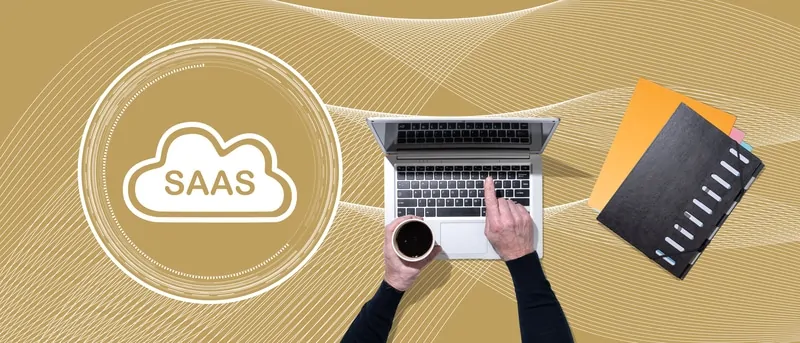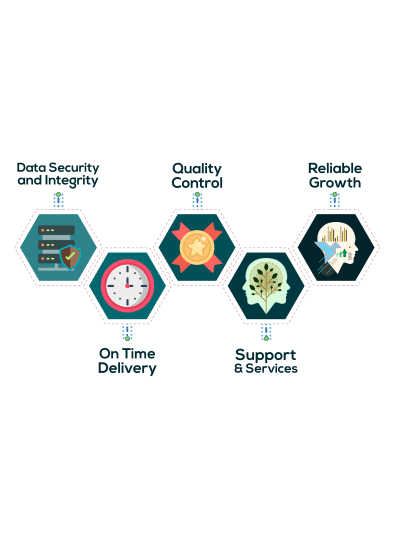
What Is White Label SaaS And Why Agencies Are Turning to It in 2025
The SaaS market isn’t just growing — it’s exploding. According to Statista, global SaaS revenue is projected to surpass $300 billion by 2025. As thousands of tools compete for attention, digital agencies, solopreneurs, and entrepreneurs are discovering a powerful way to grow their revenue without building products from scratch: white label SaaS.
This business model has gained enormous traction, especially among agencies already offering web design, development, or marketing services. Instead of reinventing the wheel, they repackage proven software under their own brand and resell it with added value.
Whether you’re offering white label wordpress sites or building scalable White Label Web Design solutions, adding white label SaaS to your service mix lets you expand without hiring a full product team.
So what exactly is white label SaaS—and why is everyone talking about it?
What Is White Label SaaS?
White label SaaS refers to a ready-made software platform developed by one company and rebranded by another as their own product. It’s different from simple reselling because you control the branding, pricing, and customer experience.
Think about this: what if you could offer your own branded CRM, SEO analytics platform, or email marketing suite—without ever touching the backend code? With white label SaaS, that’s exactly what you can do. You focus on building the brand and nurturing your clients, while the platform provider takes care of the infrastructure and feature development behind the scenes.
Compared to building custom software from the ground up, it’s faster, more affordable, and far less risky. And unlike traditional reselling, you’re not just pushing someone else’s product—you’re delivering a branded solution that feels entirely your own.
Some common examples include:
CRM tools customized for real estate or agencies
Webflow White Label panels where clients never see the original builder
Email marketing platforms with your logo and domain
In short: You sell. They build. Your name on the product.
Benefits of Using White Label SaaS
According to McKinsey, SaaS continues to outpace traditional software models, with the average SaaS business growing at 20%+ YoY.
Platforms like GoHighLevel report over 100,000 active agency users in 2024 alone — many of them running fully white-labeled operations.
Systeme.io, with over 400,000 users, allows free access to its CRM and funnel builder, making it one of the easiest entry points for aspiring SaaS owners.
Why are so many agencies embracing this model?
Cost Savings
Developing and maintaining a SaaS product can cost hundreds of thousands. White label options eliminate dev costs and drastically lower time to market.
Faster Time-to-Market
You can go from zero to live in days. No waiting on engineers. Just onboard, customize, and sell.
Scalable Revenue
Once it’s set up, your costs remain stable while your client base grows. That means better margins and recurring revenue.
Client Stickiness
When clients use your branded software, they’re less likely to leave. It becomes part of their workflow — and you’re the provider.
In-house vs. White Label SaaS (Comparison Table)
| Feature | In-House SaaS | White Label SaaS |
|---|---|---|
| Time to Market | 6–12 months | 1–2 weeks |
| Upfront Cost | $100K+ | $0–$2K/month |
| Maintenance | Your dev team | Vendor-maintained |
| Branding | Full control | Full control |
| Risk | High | Low |
| Ideal For | VC-backed startups | Agencies, solopreneurs |
Best White Label SaaS Platforms for Agencies in 2025
Looking to get started? Here are the best white label SaaS platforms for agencies this year.
HighLevel
A full-stack client management platform with CRM, funnels, SMS, email automation, and appointment booking. HighLevel is specifically built for agencies and offers a full white label dashboard.
Pros: All-in-one, strong automation
Cons: Slight learning curve
Vendasta
Vendasta offers tools for SEO, reputation management, listings, and digital advertising — all under one white label roof.
Pros: Enterprise-grade, partner ecosystem
Cons: Higher pricing tiers
DashClicks
DashClicks focuses on marketing agencies, offering tools like website audits, reporting, forms, and CRM.
Pros: Easy onboarding, agency focus
Cons: Limited customization
GoHighLevel
A high-level alternative or rebrand in some regions, GoHighLevel supports marketing automations and client campaigns.
Pros: Funnel builder, call tracking
Cons: Interface can feel dated
Custom WordPress & Webflow Solutions
You can also build White Label WordPress platforms or use Webflow White Label workspaces to deliver CMS tools that are invisible to your clients. Add your branding, set your pricing, and create a new revenue stream without coding.
Comparison of the Best White Label SaaS Platforms for Agencies
| Platform | Main Focus | Pricing (Monthly) | Customization | Best For |
|---|---|---|---|---|
| HighLevel | CRM, marketing automation | $97–$497 | Full branding, white label dashboard | Agencies, consultants |
| Vendasta | Local marketing, SEO, listings | Custom pricing | Full brand, marketplace integration | Local business-focused agencies |
| DashClicks | Marketing + client portals | $97–$297 | White label client interface | Small agencies, freelancers |
| Systeme.io | Funnels, email, CRM | Free–$97 | Limited branding on free plan | Solopreneurs, beginners |
| WordPress/Webflow | Website + CMS | Depends on hosting/dev | Full brand ownership | Web agencies, developers |
Free White Label SaaS Options: Start Without Risk
Testing the waters? Several free white label SaaS platforms offer trials and starter tiers:
HighLevel: 14-day trial
Systeme.io: Free plan with funnel builder
Bitrix24: CRM, project management, and team tools — free tier available
Heads up: Most free plans have limits — such as user count, branding restrictions, or usage caps. Still, they’re a great way to validate demand before investing.
Free Plans Comparison
| Platform | Free Tier | Branding | User Limit | Key Limitations |
|---|---|---|---|---|
| Systeme.io | Yes | No | 2,000 contacts | No custom domain, branded emails |
| Bitrix24 | Yes | Partial | 12 users | Limited tools, no full white label |
| HighLevel | 14-day trial | Yes | Unlimited | Time-limited, no free ongoing use |
Private Label SaaS vs White Label: What’s the Difference?
The terms get used interchangeably, but here’s the nuance:
Private Label SaaS: Custom-built, licensed to you with deeper branding control.
White Label SaaS: Ready-to-go, with customizable logos, domains, and UI.
Private label models are often more expensive and slower to launch — better for established players. For most agencies, white label offers a faster, more scalable entry point.
How to Launch Your Own White Label SaaS Product in 5 Steps
Ready to start? Here’s the roadmap:
1. Pick a Niche
Are you serving real estate agents, coaches, B2B marketers? Choose a vertical with clear software needs.
2. Choose a Platform
Compare pricing, features, support, and customization. Look for integration options and scalability.
3. Customize the UI
Add your logo, colors, and subdomain. Many platforms let you edit the dashboard, email templates, and reports.
4. Set Pricing
Choose between monthly, annual, or usage-based. Create packages that align with your services.
5. Launch & Promote
Use email campaigns, LinkedIn outreach, SEO, and demos. Position yourself as the product owner.
What to Watch Out for When Picking a White Label SaaS Platform
It’s easy to get excited by shiny dashboards and long feature lists—but that’s where many agencies slip up. Here are a few things you’ll want to keep in check before committing to a provider:
Loading up on features your clients never asked for (and won’t use)
Overlooking what kind of support or SLAs the vendor actually provides
Jumping in without a proper onboarding process for your team or your clients
Running blind—no tools to track usage, retention, or drop-off points
And one more thing: if you plan to offer White Label WordPress as part of your service stack, double-check that the SaaS platform plays nicely with it. A poorly integrated setup can lead to more headaches than wins.
Agency Use Cases: Real-World White Label SaaS Success Stories
A Webflow Agency Adds Recurring Revenue
A US-based design agency offered Webflow White Label dashboards for client sites. They added a $49/month “care plan” with analytics, form notifications, and uptime alerts — all powered by a third-party SaaS tool.
CRM as a Service for B2B Consultants
An agency offering B2B LinkedIn lead gen resold a White Label CRM pre-integrated with Zapier and email outreach tools. They 5x’d their client LTV without hiring a product team.
How an Outsourced Shopify Team in New York Uses Managed Hosting for WordPress Blog Integrations
Even an outsourced Shopify team in New York regularly uses white label SaaS — particularly when building out SEO blogs using WordPress. With managed WordPress hosting and a white-labeled dashboard, they integrate content and commerce seamlessly without needing a dev team on standby.
Why White Label SaaS Is the Future for Agencies
White label SaaS is no longer a fringe concept. In 2025, it’s a core part of agency operations, allowing teams to:
Launch faster
Earn recurring revenue
Deliver more value to clients
Scale without hiring
If you’re already offering White Label Web Design or dev services, SaaS is a natural next step. It’s time to think bigger.
Want to create your own branded SaaS product without writing code? Let’s build it together.
Frequently Asked Questions About White Label SaaS
What are examples of white label SaaS products?
Think of the tools agencies use every day—many of them can be white-labeled. A digital agency might offer a CRM system under its own branding, giving clients a seamless experience without ever revealing the original provider. Marketing teams often do the same with analytics platforms, email automation tools, or SEO dashboards. Even website creation can be white-labeled: some teams deliver full-featured sites using platforms like WordPress or Webflow, with their own branding front and center, and no visible trace of the original software powering it all.
Can I start a white label SaaS business without writing a single line of code?
Yes—you don’t need to be a developer to launch. Many of today’s white label SaaS platforms are built for non-technical users. They come with visual interfaces, built-in automation, and easy onboarding. Services like Systeme.io or HighLevel give you everything ready to go—you simply customize, price, and launch.
What’s the difference between white label SaaS and building your own software?
White label SaaS means you’re working with a pre-built system you can rebrand and resell. It’s fast, low-risk, and ideal if your focus is on sales, support, and growth. Custom SaaS is a full-scale product build from scratch—more control, but also more cost, responsibility, and technical upkeep. If you want to move quickly and avoid hiring a dev team, white label usually wins.



